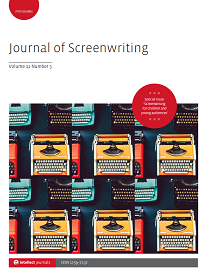
Full text loading...
 , Jose Luis Rubio-Tamayo2
, Jose Luis Rubio-Tamayo2 , Estefany DurAn-Fonseca3
, Estefany DurAn-Fonseca3
Over the last decade cinematic virtual reality (CVR) has been progressively developing as a meaningful vehicle for impactful and immersive narratives. Recent studies of CVR concepts and components have laid the ground for a CVR narrative theoretical framework that might assist researchers and practitioners to understand this type of virtual reality (VR) experience. While existing studies have isolated key features of CVR, a range of projects from different fields of work or in different stages of production have utilized a range of different screenwriting processes and strategies to address the affordances of this medium. In this article we seek to systematize the key findings of earlier studies into a narrative framework for CVR and to analyse how this framework is reflected in existent models and templates for writing a screenplay for CVR experiences. Furthermore, and based on this narrative framework, we also aim to contribute an exploratory approach to CVR screenwriting by proposing a variative and original screenwriting template. This template addresses the main limitations of the existent screenwriting templates and formats that we analyse in this study while also summoning the main advantages.

Article metrics loading...

Full text loading...
References


Data & Media loading...

Publication Date:
https://doi.org/10.1386/josc_00136_1 Published content will be available immediately after check-out or when it is released in case of a pre-order. Please make sure to be logged in to see all available purchase options.